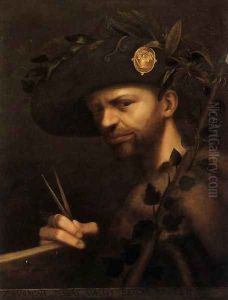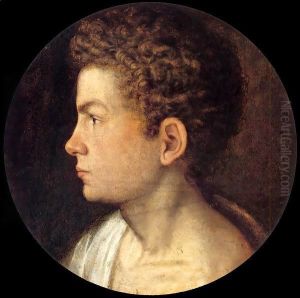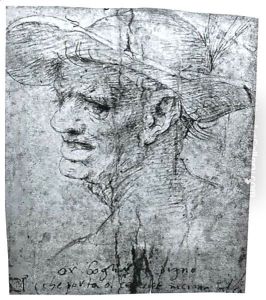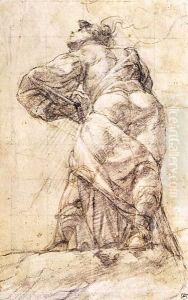Giovan Paolo Lomazzo Paintings
Giovan Paolo Lomazzo was an Italian painter, writer, and art theorist, born in 1538 in Milan. He is best known today not for his own artworks but for his contributions to art theory and criticism. Lomazzo became a prominent figure in the Milanese art scene of the late Renaissance, deeply influenced by the works of Leonardo da Vinci and the Mannerist style that was popular during his time.
Lomazzo's artistic career was cut short in 1571 when he became blind. This misfortune, however, led him to focus on writing, through which he had a lasting impact on the art world. His most famous work, 'Trattato dell'arte della pittura, scoltura et architettura' (Treatise on the Art of Painting, Sculpture, and Architecture), was published in 1584. In this extensive work, Lomazzo discusses the principles of art and beauty, drawing on classical sources as well as contemporary and Renaissance art. He introduced the concept of the 'ideale', or ideal beauty, which influenced subsequent art theories in Italy and beyond.
Lomazzo also formed the Academy of San Luca in Milan, a gathering of artists and intellectuals, which he used as a platform to disseminate his theories. His writings include discussions on color theory, the hierarchy of genres, and the use of proportion and harmony in art. Through his theoretical works, Lomazzo aimed to elevate the status of painting to that of a liberal art, stressing the importance of intellectual and theoretical preparation for artists.
Despite his blindness, Lomazzo continued to be involved in the artistic community, serving as an advisor and theoretician. His influence extended into the Baroque period, affecting artists and theorists alike. Giovan Paolo Lomazzo passed away in 1600, leaving behind a legacy that would continue to inspire and guide the art world. His contributions to art theory are considered fundamental in understanding the transition from Renaissance ideals to the more complex and dynamic visions of the Baroque.



